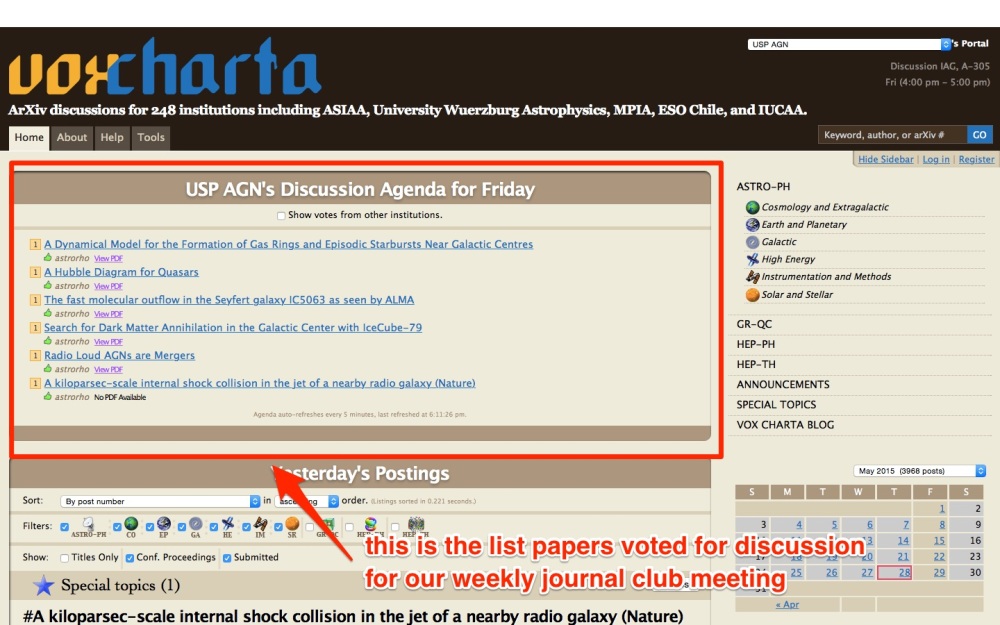Um tema de casa rápido para se fazer antes do nosso JC. O objetivo é criar um seleção dos top ten artigos sobre o evento NSNS merger (GW170817 / GRB170817 / kilonova):
- olhar as listas de papers publicados no PRL, ApJL, Science e Nature sobre o evento (ver links abaixo)
- escolher até dez artigos que você considera mais importantes para se ler sobre as descobertas (GW, prompt emission e kilonova)
- vamos comparar as escolhas que cada um fez durante a reunião e—depois de um cross-reference—decidir entre 7-10 artigos que nós vamos discutir nas próximas reuniões
Onde encontrar as listas de artigos
- PRL (2): https://www.ligo.caltech.edu/page/detection-companion-papers
- Science (8): http://science.sciencemag.org/content/early/recent
- Nature (6): http://www.nature.com/nature/index.html
- ApJL (23): http://iopscience.iop.org/issue/2041-8205/848/2?reload
Comentários sobre os artigos no ApJL, Science e Nature
- http://iopscience.iop.org/journal/2041-8205/page/Focus_on_GW170817?utm_medium=email&utm_source=iop&utm_term=&utm_campaign=12734-36073&utm_content=FI
- http://www.nature.com/nature/journal/vaop/ncurrent/full/nature24153.html
- http://www.sciencemag.org/news/2017/10/merging-neutron-stars-generate-gravitational-waves-and-celestial-light-show








